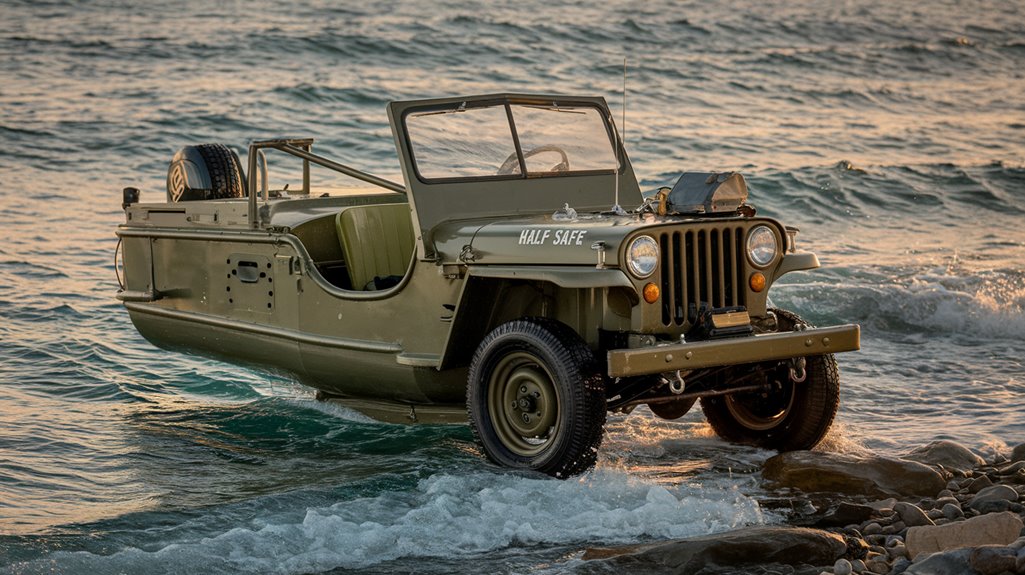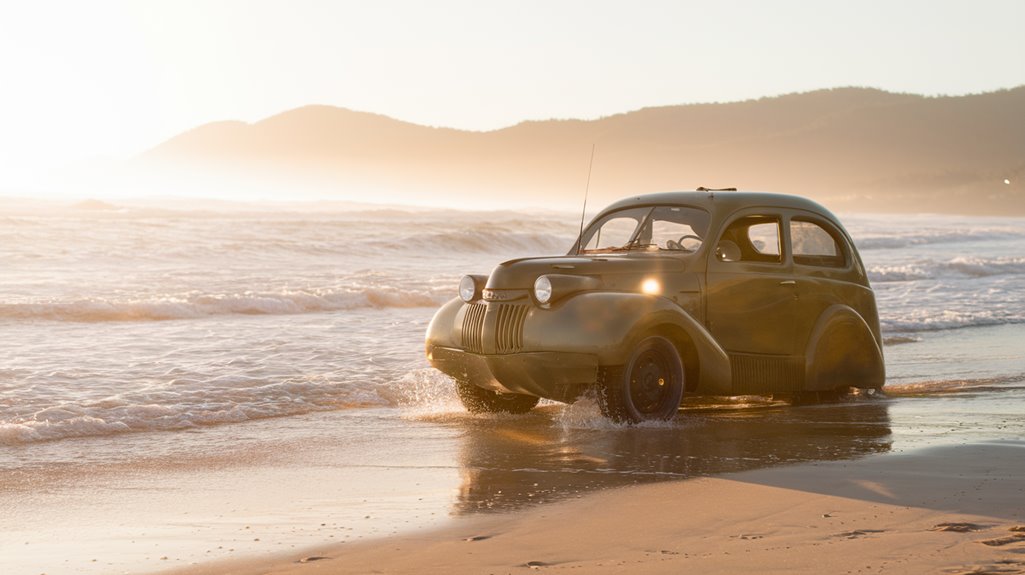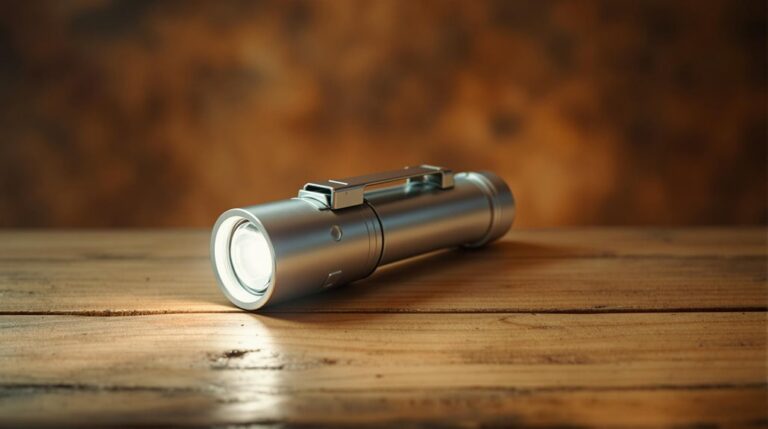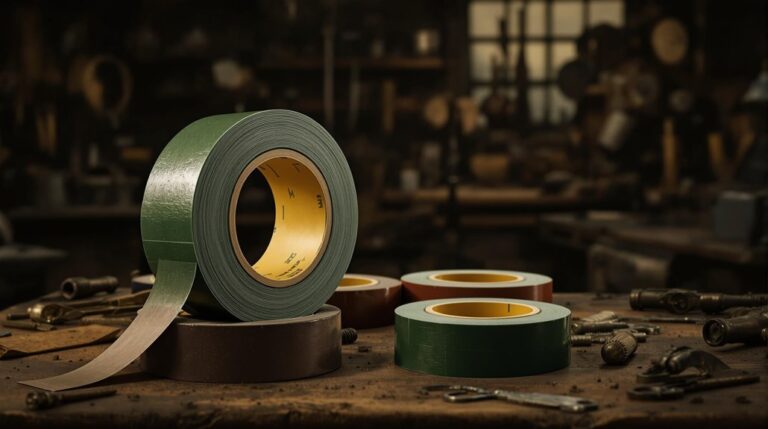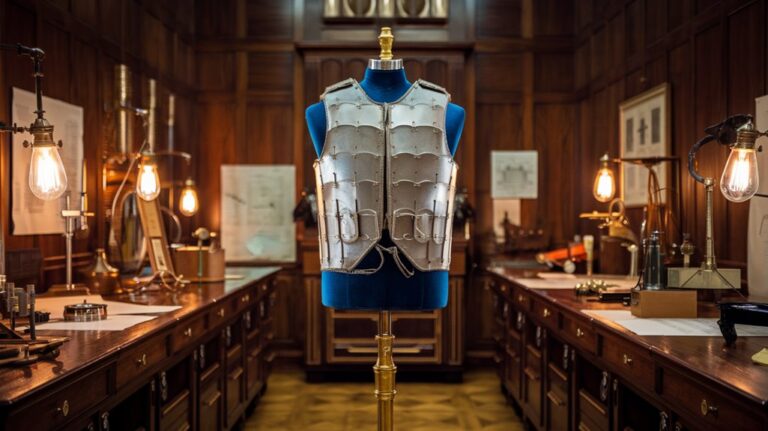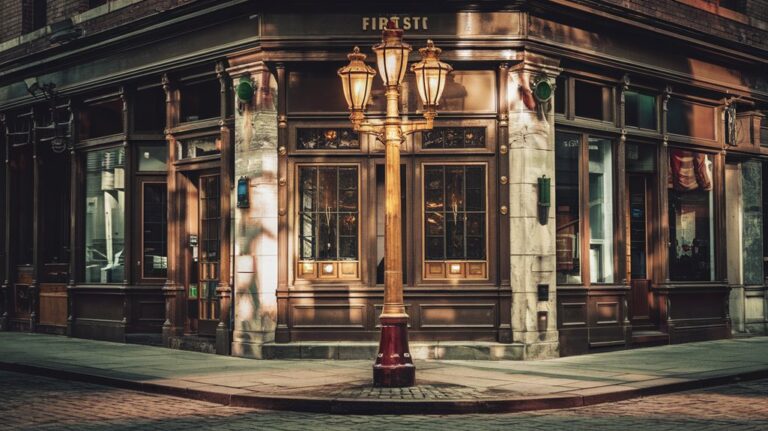Half-Safe: The Amphibious Car That Traveled the Globe
You've probably heard tales of remarkable vehicles that changed history, but you might not know about Half-Safe, the amphibious car that conquered both land and sea in an epic global journey. This transformed Ford GPA didn't just cross oceans and continents; it redefined what's possible in vehicle design. Behind its rugged exterior lies a story of innovation, determination, and one man's obsession with proving that the impossible wasn't really impossible at all.
The Birth of a Remarkable Amphibious Vehicle
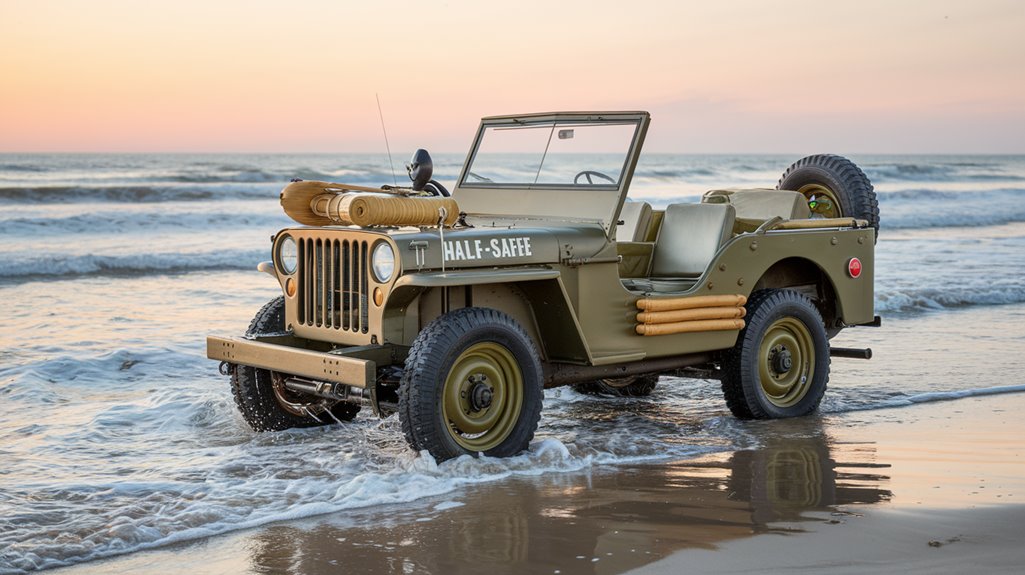
While many amphibious vehicles emerged during World War II, none would achieve the fame of the Half-Safe, which began its journey as a Ford GPA.
You might know these vehicles as "Seeps" – a clever combination of "ship" and "jeep." Ford's amphibious design allowed the GPA to navigate both land and water, though its extra weight and bulky bodywork limited its military effectiveness.
Like its predecessor the Landwasserschlepper, the Half-Safe would prove to be a remarkable amphibious achievement.
Australian engineer Ben Carlin undertook the ambitious project of modifying the vehicle for ocean travel, setting the stage for an unprecedented journey.
What made the Half-Safe an extraordinary piece of automotive innovation wasn't its original form, but the extensive modifications that followed.
You'll find that its builders extended the body to house a massive 200-gallon fuel tank, added an enclosed cabin for living quarters, and installed a larger propeller for better water performance.
These changes transformed a basic military vehicle into something far more ambitious: a machine capable of circumnavigating the globe.
From Military Surplus to Global Explorer
Shortly after World War II, Ben Carlin spotted an opportunity that would make history when he purchased a surplus Ford GPA for $901.
His surplus innovation transformed this amphibious military vehicle into an extraordinary machine capable of circumnavigating the globe.
Through clever vehicle repurposing, Carlin extended the GPA's body to house a massive 200-gallon fuel tank and built an enclosed cabin for long-distance comfort.
He didn't stop there – by boosting the total fuel capacity to 735 gallons and installing a larger propeller, he created a vessel ready for ocean crossings.
These modifications turned what was once a standard military vehicle into the legendary Half-Safe, which would become the only amphibious vehicle to circle the world by land and sea, earning its place in exploration history. Unlike modern amphibious vehicles that reach 6 knots in water, Half-Safe's modified propulsion system allowed for greater speeds during ocean transit. The incredible journey spanned 7 years and 10 months, pushing both machine and man to their limits.
A Decade-Long Journey Around the World
After launching from Halifax in July 1950, Ben Carlin's historic circumnavigation aboard Half-Safe would span an extraordinary decade of adventure and perseverance.
You wouldn't believe the challenges faced during this unprecedented journey. From constant steering problems that led to hallucinations, to battling Hurricane Charlie, Carlin had to devise innovative solutions at every turn.
He'd fix leaks with waterproof neoprene and tackle multiple engine failures at sea. When his auxiliary fuel tank broke away, he pressed on. Like the Amphibicar in 1965, Half-Safe struggled with leakage issues throughout its journey. The Carlins spent 32 days at sea during their first successful Atlantic crossing.
The journey took him across Europe to the Middle East, through Calcutta and Southeast Asia, then to Japan and Alaska.
Conquering Oceans and Continents
Beneath Half-Safe's unconventional "bathtub" design lay impressive capabilities that enabled its historic journey. The vehicle's 2,199cc petrol engine delivered 60 horsepower, powering it through both land and sea challenges.
In ocean exploration, its rounded flotation hull – inspired by the DUKW – provided essential seaworthiness, though with limited freeboard. The journey covered an astounding 39,000 miles overland across multiple countries. After conquering the Atlantic Ocean, Half-Safe underwent a major rebuild to continue its voyage.
The vehicle design balanced versatility with practicality. You'd find sophisticated controls including a 2WD/4WD system, hi-range/low-range gearing, and specialized marine equipment like a rudder and propeller.
While it could reach speeds of 40 mph on land and 10 kph in water, the tradeoff was clear – its 7,350-pound battle-ready weight and bulky dimensions made for challenging maneuverability.
Despite these limitations, Half-Safe's robust engineering proved vital for crossing both oceans and continents.
The Man Behind the Machine: Ben Carlin
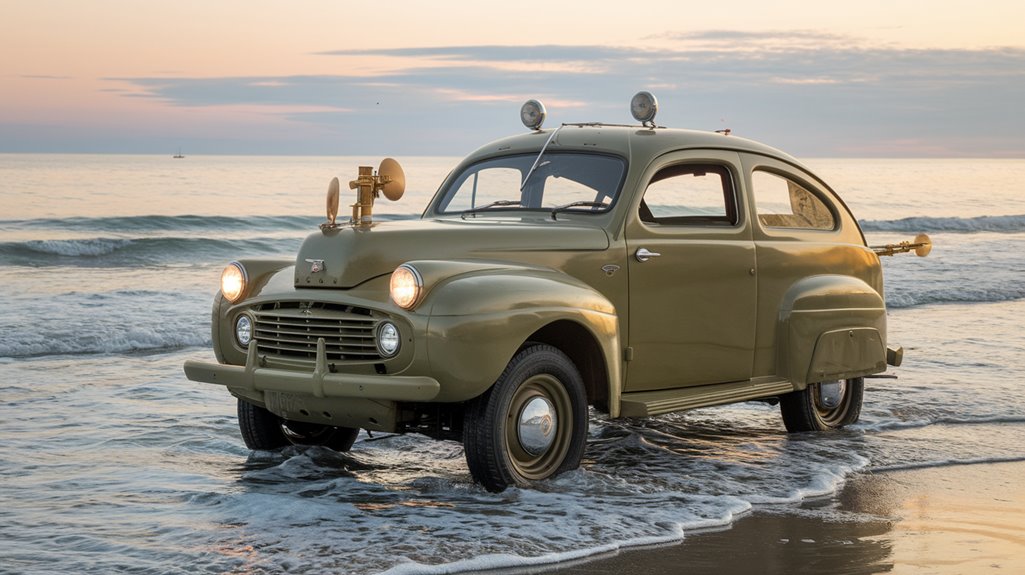
Behind Half-Safe's remarkable achievements stood Ben Carlin, an Australian-born adventurer whose life prepared him perfectly for this unprecedented journey. Born in Western Australia in 1912, his early career as a mining engineer and military service shaped his technical expertise and adventurous spirit.
After losing his mother at age four, Carlin was raised by his father, an electrical engineer, which likely influenced his future technical pursuits.
While serving in India during World War II, he first encountered what would become Half-Safe when he inspected a GPA.
Carlin's determination shone through his engineering innovations on the Half-Safe project. You'll appreciate how his background equipped him with the skills needed to transform a military vehicle into a globe-trotting amphibian:
- Mining engineering education from Kalgoorlie School of Mines
- Experience working in international mines
- Military engineering expertise from the Indian Army Corps
- Hands-on mechanical knowledge from the Australian Goldfields
After purchasing the Ford GPA in 1946, he meticulously modified it with enhanced capabilities, proving that one person's vision could reshape what's possible in vehicle exploration.
Legacy and Present-Day Impact
While Half-Safe's global circumnavigation ended decades ago, its influence continues to ripple through modern amphibious vehicle development.
You'll find its technological evolution reflected in contemporary vehicles like the Gibbs Terraquad, which transforms in seconds and achieves impressive speeds both on land and water.
 increasing fuel capacity became a crucial blueprint for modern amphibious designs. The Gibbs company has demonstrated remarkable progress with their High Speed Amphibian technology, accumulating over 350 patents worldwide.
increasing fuel capacity became a crucial blueprint for modern amphibious designs. The Gibbs company has demonstrated remarkable progress with their High Speed Amphibian technology, accumulating over 350 patents worldwide.
You can see its legacy in educational settings, where it serves as a compelling case study in problem-solving and entrepreneurial spirit.
Today's amphibious vehicles incorporate enhanced safety features and sophisticated designs that build upon Half-Safe's pioneering framework.
From the Quadski to commercial applications, you'll notice how Ben Carlin's improvised modifications have inspired a new generation of purpose-built vehicles, proving that one adventurer's determination can spark decades of innovation.

